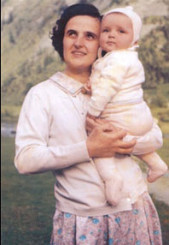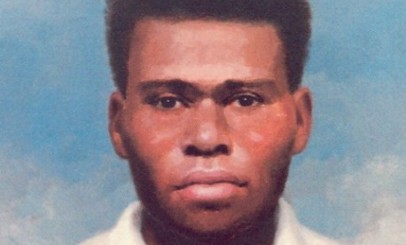With almost 40 million of the U.S. population having tried internet dating, it has become one of the largest online industries, grossing almost two billion dollars in 2011. eHarmony and Match.com have over 30 million users combined and the sites that focus mainly on Catholics—Catholicmingle.com, Catholicmatch.com and Avemariasingles.com—account for well over 200,000 individuals.
Given these numbers, it is fair to ask how helpful these sites are for finding successful relationships, including marital ones.
How do these websites help?
• These sites enable you to overcome many geographical limitations. Online sites expand the range of people you might meet. You can contact others of similar interests that are beyond where you work, live, and worship.
• You have a better chance of meeting people with similar beliefs. The websites either match you with people based on your preferences or provide tools that enable you to do the searching yourself. The Catholic sites have the added advantage of emphasizing a person’s faith. This enables people to discuss their beliefs up front, in the first few interactions, instead of after several conversations or dates. As shared values are essential for successful relationships and marriage, it is helpful to discuss them as you get to know someone and before you move forward in a relationship.
• The sites make it easier to meet people in-person, the best way to evaluate the potential for a relationship. They help you draw from a large pool of individuals to find those who might be of interest to you. After a few interactions online, the sites often suggest a short meeting in a public place, like a coffee shop, to see if you want to continue getting to know the other person. (Three or four online interactions seem to be ideal as by then you know if you are interested and you have found out most of what you can without meeting in person.) Many of the sites even sponsor events for users to facilitate these face-to-face meetings. Match.com, for example, has an initiative called “The Stir” where they sponsor events for users to meet each other.
• Each site takes several precautions to ensure the safety of its users. All of the companies said they screen profiles before posting them and continually check them for any violations of the company’s decency standards. Users are able to report any inappropriate material on profiles. The sites also recommend that you delay sharing your phone number and email address until after a few in-person meetings. You still must be cautious and responsible for your own safety, but there are several mechanisms in place to help protect users.
What are their limitations?
• Different sites focus on different types of relationships. Match.com is geared to provide users with a full range of relationship options from casual encounters to finding potential spouses. eHarmony emphasizes serious relationships, utilizing a 400 question personality inventory to pair users. The Catholic sites focus on serious relationships through a two-fold process of self-selection. First, by targeting Catholics, these sites attract Catholics, and Catholics typically value marriage. Second, each Catholic site further indicates what kind of emphasis it places on marriage. Avemariasingles.com, for example, is for those “practicing Catholics who are serious about marriage, not window shoppers looking for a date.” Catholicmingle.com, on the other hand, is for those seeking a faith community “for friendship, dating or marriage.”
• Be wary of any distinct, special, or “scientific” claims for matching people. What research has been done on these methods indicates, at best, that they are not as effective as in-person assessments and, at worst, that they are flawed in their approach. What these “matching” options are good at is eliminating those who are least compatible. In other words, the sites are better at indicating what two people would NOT have a good relationship rather than what two people will have a good relationship.
• Too many matches can become overwhelming. Imagine looking at a menu in a restaurant that has 1,000 possible meals on it. It is difficult to choose. Typically, what people do in these situations is break it down into easier choices (“Do I want chicken or fish?”) and eliminate huge portions of the menu. The problem is that this process can easily eliminate some of the best options. This approach is often what people end up doing on dating websites. When faced with a large number of matches, people choose some characteristic, like hair color or height, and eliminate those who do not have that characteristic. They do this to make the choosing manageable, but it does not guarantee the best outcomes. In short, more does not necessarily mean better.
• The sites tend to overly emphasize personal preference or fulfillment. Obviously, your own choice and preferences matter a great deal in choosing a spouse. Yet, marriage for Catholics is not just about what you want but how you will love and care for others. Another way to think about this is that dating websites often make the process feel like shopping, like a person is picking out a new coffee machine, golf clubs, or clothes. The result is that trying to figure out who is a good match often stops with “what makes you happy.” It forgets to ask: “Is this person good and loving to others as well as to me?”
• Finally, no one should forget that the goal of these sites is to make money. They usually allow you to register and browse for free and do not require payment (typically around $20 a month for 6 months) until you want to contact someone. This money provides you a service, a useful and often quality service, one that can even help you to find a spouse. Yet, the goal of the company is still, first and foremost, profit. While they want some people to meet and be happy together, they want most people to keep coming back and using the service. This is how they make money. Your interest in a good marriage and their interest in a good profit may align, but they will not always or necessarily do so.
Do they help you to find a spouse?
They can. In fact, in 2011 almost 20% of marriages began online. Just be clear that these dating websites help not by finding the perfect match for you but by expanding the number of people you can meet.
These sites complement meeting people in-person or through family, friends, or church groups. If you approach the sites this way, you should feel comfortable and even hopeful using them.
For Further Reading:
Catholics Are Meeting Their Spouse Online – a PDF from CatholicMatch
 Born: October 4, 1922
Born: October 4, 1922

 Born: 1912
Born: 1912 Born: March 14, 1841
Born: March 14, 1841
 Born: August 28, 1774
Born: August 28, 1774



